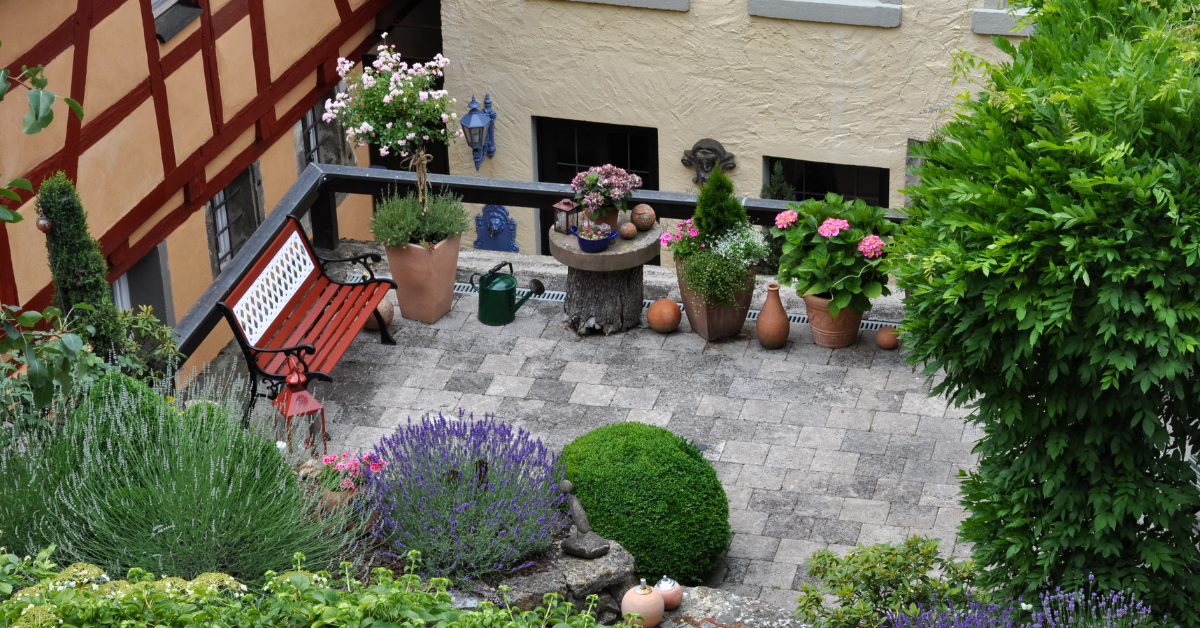Introduction
As urbanization accelerates globally, cities are grappling with pressing environmental challenges. Urban expansion, marked by sprawling concrete jungles, has resulted in higher pollution levels, the urban heat island effect, and the loss of natural spaces. These issues have contributed to a significant decline in the overall quality of life in cities. The urban heat island effect, where urban areas become significantly warmer than their rural surroundings, exacerbates energy consumption and intensifies heat waves.
In response, architects and urban planners are turning to nature-inspired solutions like green roofs and living walls. These systems integrate vegetation into buildings, offering a sustainable approach to counter urbanization’s negative effects. Not only do they enhance a city’s aesthetic, but they also provide environmental and economic benefits by cooling urban areas, improving air quality, and promoting biodiversity. This article explores how green roofs and living walls are transforming cities and contributing to a healthier, more sustainable future.
What are Green Roofs and Living Walls?
Green roofs are specially designed rooftop systems that are covered with layers of vegetation, growing media, and waterproofing membranes. They provide space for plants to grow on top of buildings, which helps to reduce the overall heat absorption of urban structures. There are two main types of green roofs:
- Extensive green roofs: These roofs are designed with lightweight, shallow soil layers and hardy plants that require minimal maintenance. They are primarily used for environmental purposes, such as cooling and water absorption.
- Intensive green roofs: These are more elaborate systems with deeper soil layers that support a wider variety of plants, including shrubs and trees. Intensive green roofs are often designed as rooftop gardens and require regular maintenance.
Living walls, also known as vertical gardens or green facades, are vertical structures covered with plants. These walls can be part of a building’s exterior or interior, adding natural beauty while providing environmental benefits. Plants are rooted either in the ground, in containers, or in specially designed systems that deliver water and nutrients directly to the roots. Living walls can be used to cover entire building facades or small sections, providing a lush, green space in areas where horizontal planting is not possible.
While both green roofs and living walls contribute to making urban areas more sustainable, they differ in their application and design. Green roofs are primarily horizontal installations on building tops, while living walls are vertical structures, either attached to walls or freestanding. Together, they form a critical component of green infrastructure, helping cities combat climate change, improve air quality, and enhance urban biodiversity.
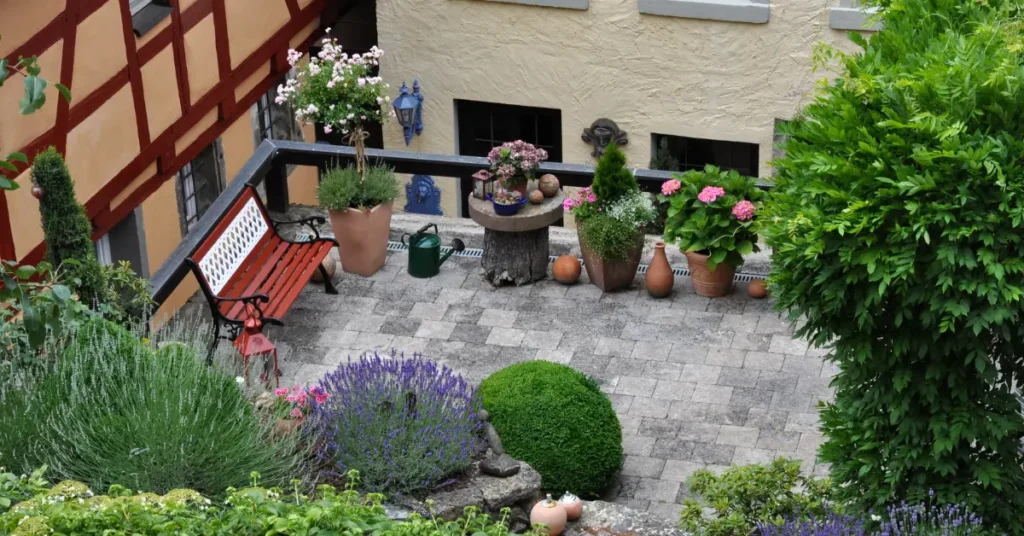
Environmental Benefits of Green Roofs
Green roofs provide a range of environmental benefits that make them an essential element of sustainable urban design. By introducing vegetation to rooftops, cities can mitigate many of the negative effects of urbanization.
Reducing Urban Heat Island Effect
One of the most important benefits of green roofs is their ability to reduce the urban heat island effect. Urban areas tend to be significantly warmer than rural regions because buildings and paved surfaces absorb and retain heat. This leads to higher energy consumption for cooling during hot months, which exacerbates energy demand and contributes to climate change.
Green roofs help to combat this issue by absorbing sunlight that would otherwise be retained by conventional rooftops. The vegetation and soil layers on green roofs act as natural insulators, preventing heat from penetrating buildings and radiating into the surrounding environment. This cooling effect has been well-documented; in fact, studies have shown that green roofs can reduce surface temperatures by up to 40-60°F (4-15°C) during peak heat periods, significantly cooling both the building and the surrounding area.
Additionally, green roofs help reduce the need for air conditioning in buildings by providing thermal insulation. This not only lowers energy bills for building owners but also reduces the demand for electricity, which is often generated by fossil fuels. The result is a reduction in greenhouse gas emissions, contributing to a more sustainable urban environment.
Enhancing Urban Biodiversity
Urban areas are often devoid of natural habitats, leaving limited space for plants and animals to thrive. Green roofs can help address this issue by creating microhabitats for a variety of species, particularly birds, insects, and pollinators. The vegetation on green roofs provides food, shelter, and breeding grounds for wildlife that might otherwise struggle to survive in concrete-dominated environments.
In cities like London, green roofs have been designed specifically to promote biodiversity by incorporating native plants that attract local wildlife. This approach helps to restore some of the ecological balance lost to urban development and provides opportunities for species conservation. For example, a report by Living Roofs and Walls highlighted how green roofs across the city are supporting biodiversity by creating green corridors that link isolated green spaces, allowing species to move and interact more freely.
In addition to supporting biodiversity, green roofs also help to improve air quality by filtering pollutants from the air. The plants on green roofs absorb carbon dioxide and other pollutants, helping to clean the air in densely populated urban areas. This contributes to a healthier environment for city residents, particularly in areas with high levels of air pollution.
Rainwater Management
Another key environmental benefit of green roofs is their ability to manage rainwater. In urban areas, rainfall often leads to flooding because water cannot penetrate impermeable surfaces such as roads, sidewalks, and traditional rooftops. This runoff overwhelms stormwater systems, leading to flooding and water pollution.
Green roofs act as natural sponges, absorbing rainwater and reducing the amount of runoff that enters the stormwater system. The soil and vegetation layers retain water, slowly releasing it over time through evapotranspiration. This process not only reduces the risk of flooding but also helps to purify the water by filtering out pollutants before it reaches the drainage system.
For example, the Chesapeake Bay Program notes that green roofs can retain up to 75% of the rainwater they receive, significantly reducing the amount of stormwater runoff that contributes to flooding and water pollution. This makes green roofs a valuable tool in urban water management, particularly in cities with aging or overwhelmed infrastructure.
For more insights into maintaining soil health for green roofs and living walls, check out this guide on soil health for urban gardeners. Proper soil management is essential
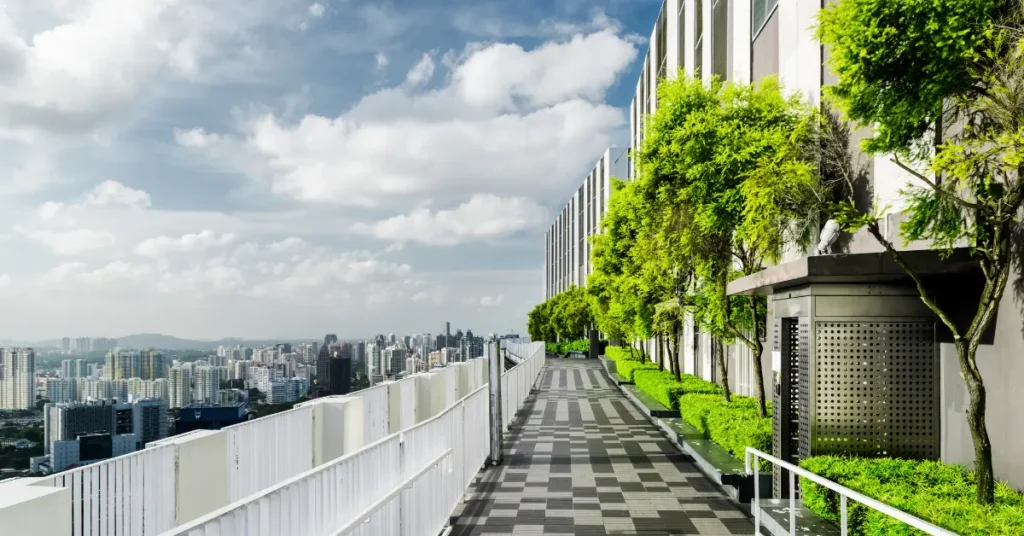
Environmental Benefits of Living Walls
While green roofs offer substantial environmental benefits, living walls also play a crucial role in making urban spaces more sustainable and healthy. These vertical gardens are not only aesthetically pleasing but also deliver measurable environmental improvements, especially in cities where horizontal green space is scarce.
Air Quality Improvement
Living walls contribute significantly to improving air quality in urban areas. City air often contains high levels of pollutants such as particulate matter (PM), nitrogen dioxide (NO₂), and carbon dioxide (CO₂), which have detrimental effects on human health. The plants used in living walls act as natural air filters by trapping particulate matter on their leaves and absorbing gases like CO₂.
Studies have shown that living walls can reduce particulate matter by up to 60%, making them an effective tool for combating urban air pollution. For instance, research by the National Institutes of Health (NIH) indicates that green walls with dense foliage are particularly effective at capturing pollutants from nearby roadways and industrial areas. These vertical gardens, by filtering harmful particles, help to create cleaner air in densely populated cities, benefiting public health.
Cooling Urban Areas Naturally
Similar to green roofs, living walls help cool urban areas by providing natural shade and reducing the overall temperature of building surfaces. Buildings with living walls experience less solar heat gain, meaning they absorb less heat compared to traditional walls. This results in cooler interior environments and reduces the need for air conditioning.
Living walls achieve this through a combination of shading and evapotranspiration. As plants release water vapor through their leaves, they cool the surrounding air, much like green roofs. This natural cooling effect helps reduce the urban heat island effect, especially when living walls are installed in dense, high-traffic areas. A report by the U.S. Department of Energy highlights that living walls can lower building temperatures by up to 10°F, making them a powerful tool in reducing energy consumption for cooling in urban environments.
Noise Pollution Reduction
Noise pollution is a growing concern in cities, where constant traffic, construction, and industrial activities create a noisy environment. Living walls can act as effective noise barriers, absorbing sound waves and reducing the overall noise levels in their surroundings. The vegetation and the structure of the wall help to break up sound waves, reducing their intensity as they pass through.
For example, a study published in Building and Environment found that living walls can reduce noise levels by up to 12 decibels, providing a quieter and more peaceful urban environment. This makes living walls particularly beneficial in high-density areas like apartment buildings, schools, and hospitals, where noise reduction is critical for improving the quality of life for residents.
Economic and Social Benefits
Beyond their environmental impact, green roofs and living walls also offer significant economic and social benefits, making them a smart investment for building owners and city governments alike. These benefits contribute to improved property values, energy savings, and enhanced social well-being.
Increased Property Value
Properties with green roofs or living walls tend to have higher market value due to their aesthetic appeal and environmental benefits. Green spaces are highly desirable in urban areas, and buildings that incorporate sustainable features often attract more attention from potential buyers or tenants. Additionally, green buildings are viewed as more progressive and environmentally conscious, which can enhance their reputation and appeal to environmentally-aware clients.
According to the U.S. Green Building Council (USGBC), green buildings typically command higher rents and sales prices. For instance, buildings with green roofs in cities like New York and Chicago have been shown to increase property values by up to 7%, making them a valuable addition to urban real estate portfolios. In densely populated cities where space is limited, transforming unused rooftops into green spaces can significantly boost the desirability and marketability of a property.
Energy Savings for Buildings
Green roofs and living walls can lead to substantial energy savings for building owners by providing natural insulation and reducing the need for heating and cooling. During the summer, green roofs prevent heat from penetrating the building, reducing the demand for air conditioning. In the winter, green roofs act as insulators, helping to keep heat inside the building and reducing the need for heating.
Living walls provide similar benefits by shading buildings from direct sunlight and reducing heat absorption. The combined effects of shading and evapotranspiration help lower indoor temperatures, reducing the need for mechanical cooling systems. According to research from the Center for Energy and Environmental Innovation at Carnegie Mellon University, buildings with green roofs can see energy savings of up to 25% in cooling costs, while living walls can reduce energy consumption by an additional 10-20%.
Urban Agriculture Opportunities
One of the more innovative uses of green roofs and living walls is their potential for urban agriculture. With growing concerns about food security and sustainability, urban farming has become an increasingly popular solution. Green roofs can be used to grow food in urban environments where space is limited, turning rooftops into productive agricultural spaces.
In cities like Brooklyn, New York, urban farming initiatives have transformed rooftops into thriving gardens, producing fresh fruits, vegetables, and herbs. These rooftop farms not only provide local, sustainable food sources but also create jobs and educational opportunities for city residents. Brooklyn Grange, one of the largest rooftop farms in the world, operates over 5.6 acres of green roofs, producing over 50,000 pounds of organically-grown produce annually. This model demonstrates the potential for green roofs to contribute to urban agriculture while addressing food security challenges in cities.
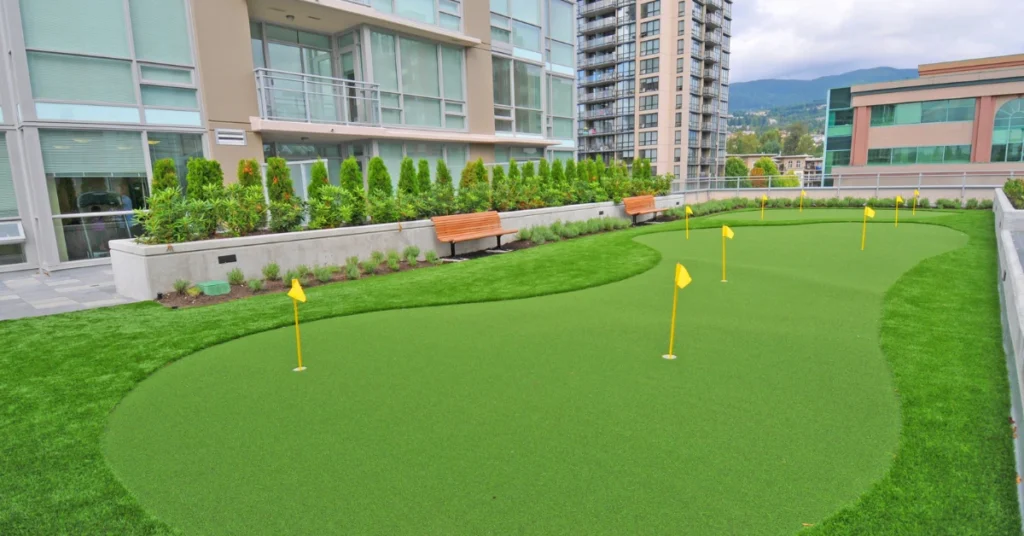
Green Roofs and Living Walls in Combating Climate Change
Green roofs and living walls play a crucial role in the global fight against climate change. By sequestering carbon, reducing energy consumption, and improving urban resilience, they contribute to creating more sustainable cities capable of adapting to a changing climate.
Carbon Sequestration
One of the most important ways in which green roofs and living walls contribute to climate change mitigation is through carbon sequestration. Plants naturally absorb carbon dioxide (CO₂) from the atmosphere during photosynthesis, helping to reduce the concentration of greenhouse gases. Green roofs and living walls act as carbon sinks, capturing and storing CO₂ that would otherwise contribute to global warming.
According to the Green Roof Organisation, the amount of carbon sequestered by green roofs depends on the type of vegetation used, the size of the roof, and the local climate. On average, green roofs can sequester between 0.2 to 0.3 kg of CO₂ per square meter per year. While this might seem small on an individual scale, the cumulative effect of green roofs across a city can have a significant impact on carbon reduction efforts.
If you’re interested in more sustainable gardening practices that can complement your green infrastructure projects, visit this beginner’s guide to sustainable gardening. It offers practical tips that can be applied to green roofs and urban gardens alike.
Climate Resilience for Cities
In addition to mitigating climate change, green roofs and living walls help cities adapt to the impacts of a changing climate. Extreme weather events, such as heatwaves, floods, and storms, are becoming more common due to climate change, placing greater strain on urban infrastructure. Green roofs and living walls enhance the resilience of cities by providing natural protection against these extreme events.
For example, green roofs help absorb excess rainfall during heavy storms, reducing the risk of flooding. They also provide cooling during heatwaves, helping to protect vulnerable populations from extreme heat. In cities like Paris, where new buildings are required to have green roofs or solar panels, these green features are helping to create more climate-resilient urban environments. This dual role—both mitigating and adapting to climate change—makes green roofs and living walls a key part of sustainable urban planning.
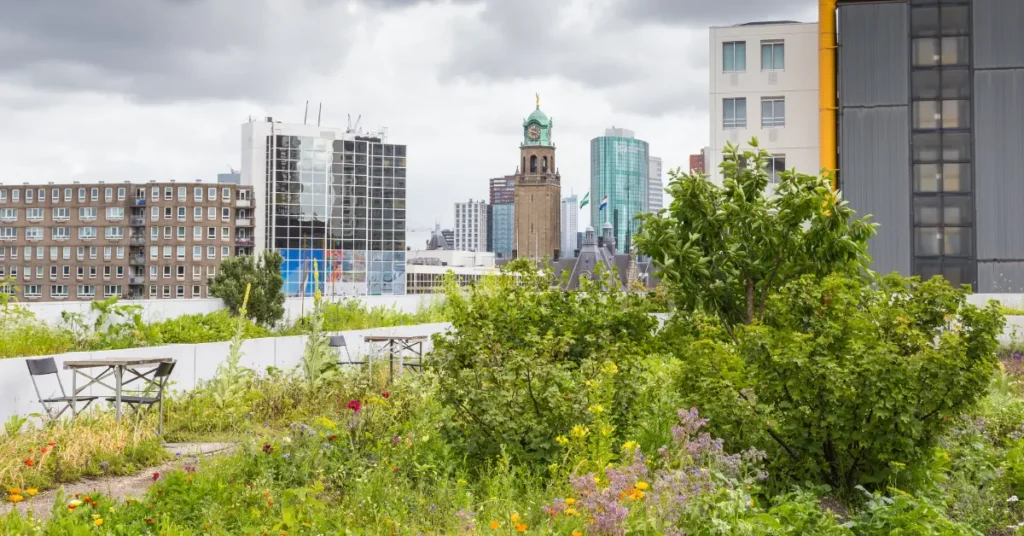
The Role of Government Policies in Promoting Green Architecture
Government policies are essential for the widespread adoption of green roofs and living walls. Many cities have recognized the environmental, social, and economic benefits of these systems, and have introduced regulations, incentives, and mandates to encourage their implementation. These policies not only make it easier for property owners to install green infrastructure but also ensure that cities move toward a more sustainable future.
Green Roof Mandates and Incentives
Several cities around the world have introduced mandates that require new buildings to include green roofs. These mandates are often part of broader efforts to reduce energy consumption, manage stormwater, and combat the urban heat island effect. For example, Paris became the first European city to mandate green roofs or solar panels on all new commercial buildings. Similarly, Toronto, Canada, has a Green Roof Bylaw that requires green roofs on new residential, commercial, and industrial developments over a certain size.
In addition to mandates, many governments offer financial incentives to encourage the adoption of green roofs and living walls. These incentives can include tax breaks, grants, and rebates to offset the installation costs. In the United States, cities like New York have implemented a Green Roof Tax Abatement Program that provides financial support for property owners who install green roofs. These programs have been successful in promoting the growth of green infrastructure by making it more accessible and affordable for a wider range of property owners.
Importance of Building Codes and Standards
In addition to incentives, building codes and standards play a critical role in ensuring the safety and sustainability of green roofs and living walls. By setting minimum requirements for design, materials, and installation, building codes help prevent potential problems such as water leakage, structural instability, and fire hazards. Codes also ensure that green roofs and walls are designed to meet local climate conditions and environmental goals.
For instance, the ASTM E2777 standard provides guidelines for the structural and performance requirements of green roofs. These standards help to ensure that green roofs are designed and built to last, providing long-term environmental and economic benefits. Cities that adopt strict building codes for green infrastructure not only protect property owners but also promote the longevity and effectiveness of these systems in achieving sustainability goals.
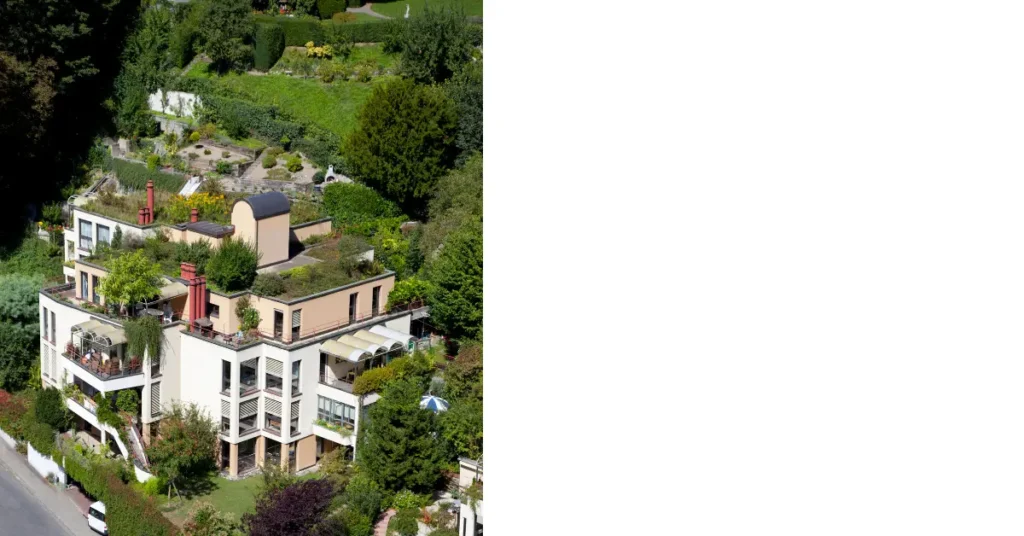
Green Roof and Living Wall Installation: Costs, Materials, and Challenges
While green roofs and living walls offer numerous benefits, their installation requires careful planning and consideration of various factors such as costs, materials, and ongoing maintenance. Understanding these elements is crucial for successful and sustainable green infrastructure projects.
Installation Process and Materials
The installation of green roofs and living walls involves several steps, including design, material selection, and construction. For green roofs, the installation typically begins with the preparation of the roof surface, which must be waterproofed and structurally reinforced to support the weight of the soil and plants. A drainage layer is added to prevent waterlogging, followed by a growing medium (soil) and the plants themselves. The choice of plants is critical; they must be able to thrive in rooftop conditions, which often include intense sunlight, wind, and temperature fluctuations. Succulents, grasses, and drought-tolerant plants are commonly used for extensive green roofs.
Living walls, on the other hand, require a vertical support structure that can hold the weight of the plants and the growing medium. This can be a freestanding wall or part of an existing building. Irrigation systems are often integrated into living walls to ensure that the plants receive adequate water. The installation process for living walls can be more complex than green roofs, especially if the wall is designed to cover a large surface area.
Maintenance Requirements
Maintaining green roofs and living walls is essential for ensuring their long-term success. While extensive green roofs require minimal maintenance due to the use of hardy, low-maintenance plants, intensive green roofs and living walls need regular upkeep. This includes watering, pruning, weeding, and replacing plants as necessary. Additionally, irrigation systems need to be inspected regularly to ensure they are functioning properly.
Seasonal maintenance is also required for both green roofs and living walls. In colder climates, winterization may be necessary to protect plants from frost damage, while in hotter climates, additional watering may be required during the summer months. For property owners who lack the time or expertise to maintain green infrastructure, professional maintenance services are available.
Cost Considerations
The cost of installing green roofs and living walls can vary depending on factors such as size, design complexity, and materials used. Extensive green roofs, which require less soil and simpler plant selections, tend to be more affordable, with installation costs ranging from $10 to $20 per square foot. Intensive green roofs, which involve more complex designs and deeper soil layers, can cost between $25 and $50 per square foot.
Living walls are generally more expensive to install due to the additional materials and labor required for vertical installations. The cost of living walls can range from $100 to $200 per square foot, depending on the size and complexity of the system. However, the long-term benefits of energy savings, increased property value, and environmental impact can offset these initial costs over time.
For property owners interested in green roofs or living walls but concerned about the upfront costs, many cities and governments offer financial incentives, as mentioned earlier. Additionally, building owners can explore partnerships with environmental organizations or local governments to share the costs and benefits of these projects.
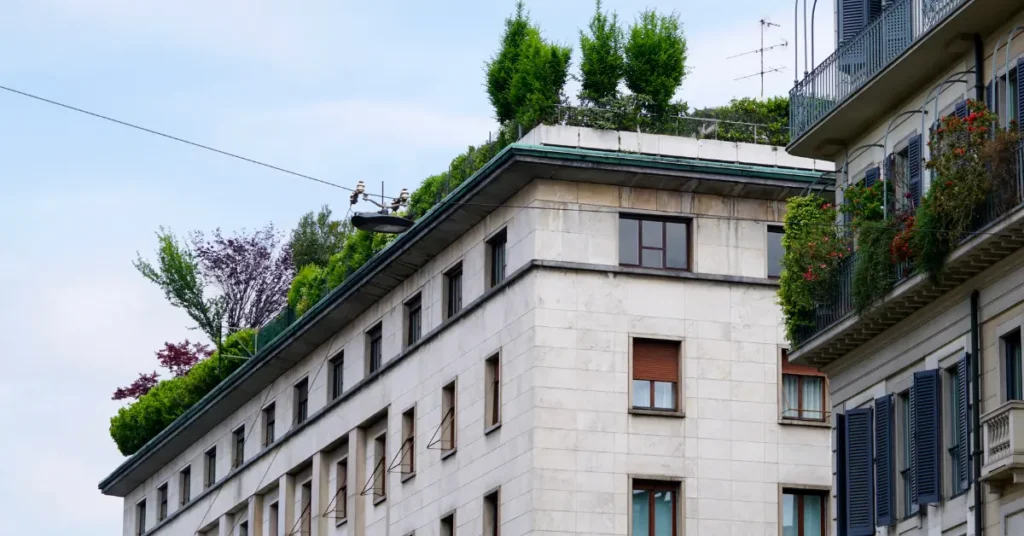
Case Studies: Cities Leading the Way in Green Roofs and Living Walls
Several cities around the world have embraced green roofs and living walls as key components of their urban sustainability strategies. These case studies highlight the successful implementation of green infrastructure and demonstrate the transformative impact it can have on urban environments.
Singapore: A Green Roof and Wall Pioneer
Singapore is often regarded as one of the world’s leaders in integrating nature into urban environments. With its ambitious Green Mark Scheme, Singapore has incentivized the development of green roofs and living walls across its urban landscape. Buildings such as the Parkroyal on Pickering and Oasia Hotel Downtown feature lush green walls and rooftop gardens that contribute to the city’s reputation as a “City in a Garden.”
In addition to enhancing biodiversity and improving air quality, Singapore’s green roofs and walls play a vital role in mitigating the urban heat island effect. These projects have set a global example for how cities can integrate green infrastructure into dense urban environments while creating spaces that improve the quality of life for residents and visitors alike.
New York City’s Green Roof Initiative
New York City has been at the forefront of promoting green roofs as part of its sustainability agenda. The NYC Green Roof Tax Abatement Program provides financial incentives for property owners who install green roofs, making it more accessible for developers and businesses to adopt green infrastructure. Projects such as the Javits Center’s 6.75-acre green roof have transformed underutilized rooftop spaces into thriving ecosystems that support biodiversity and reduce energy consumption.
The Javits Center green roof, one of the largest in the city, has become a habitat for over 25 bird species and thousands of honeybees, contributing to urban biodiversity. The project has also helped reduce the building’s energy use by 26%, showcasing the potential of green roofs to make a tangible impact on both the environment and building performance.
European Examples: Paris and Berlin
In Europe, cities like Paris and Berlin have been pioneers in integrating green roofs and living walls into their urban planning strategies. Paris’s green roof mandate, introduced in 2015, requires all new commercial buildings to include either a green roof or solar panels. This policy has helped the city reduce its carbon footprint and manage stormwater more effectively.
Berlin, meanwhile, has a long history of green roof initiatives dating back to the 1980s. Today, the city boasts over 100 hectares of green roofs, including notable projects like the Britzer Garten, which features a mix of extensive and intensive green roofs. Berlin’s commitment to green infrastructure has made it a model for other European cities looking to enhance urban sustainability through innovative green solutions.

Future of Green Roofs and Living Walls in Urban Planning
As cities continue to face the challenges of rapid urbanization and climate change, green roofs and living walls are likely to play an even greater role in urban planning. The future of these green infrastructures will be shaped by advances in technology, new materials, and the integration of green spaces into smart cities.
Trends in Sustainable Architecture
The field of sustainable architecture is evolving rapidly, with green roofs and living walls becoming key components of energy-efficient building designs. Innovations such as lightweight soil substitutes, modular green roof systems, and advanced irrigation technologies are making it easier and more cost-effective to implement green infrastructure in urban areas. Architects and designers are increasingly looking for ways to incorporate more greenery into buildings, both for environmental reasons and for the mental and physical health benefits they provide to occupants.
Integration with Smart Cities
As cities become more connected and data-driven, the integration of green roofs and living walls with smart city technologies is becoming a reality. Sensors can be used to monitor plant health, soil moisture levels, and environmental conditions, allowing for real-time adjustments to irrigation and maintenance systems. This technology-driven approach to green infrastructure ensures that these systems operate efficiently and deliver maximum environmental benefits.
For example, cities like Amsterdam are exploring the use of smart technologies to monitor the performance of green roofs in terms of energy savings, water retention, and biodiversity. This integration of green infrastructure with smart city platforms will enable cities to optimize the performance of green roofs and living walls, making them a critical component of future urban sustainability strategies.
Conclusion
Green roofs and living walls are transforming urban landscapes into vibrant, sustainable green spaces that address some of the most pressing environmental challenges of our time. By reducing the urban heat island effect, managing stormwater, improving air quality, and enhancing biodiversity, these systems offer numerous environmental, social, and economic benefits. Furthermore, as cities around the world adopt policies and incentives to promote green infrastructure, green roofs and living walls are becoming an integral part of modern urban planning.
As we move toward a more sustainable future, green roofs and living walls will continue to play a vital role in creating healthier, more resilient cities. Whether through individual projects or large-scale urban initiatives, the potential for green infrastructure to transform urban environments is immense. It is time for individuals, businesses, and policymakers to embrace these innovations and invest in the green cities of tomorrow.
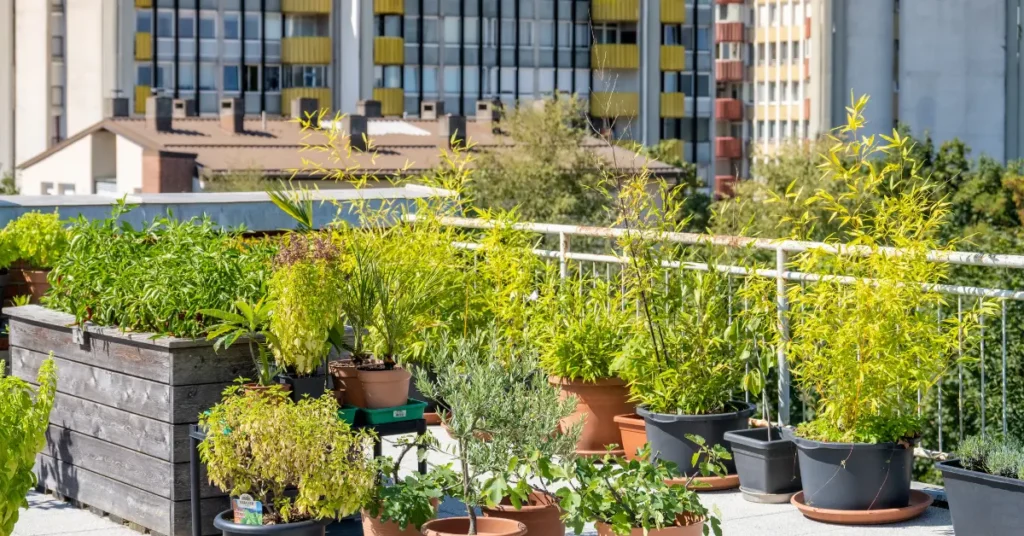
Frequently Asked Questions (FAQ)
1. What are the main benefits of green roofs?
Green roofs provide multiple benefits, including:
- Reducing urban heat islands by cooling surrounding areas
- Improving air quality through plant absorption of CO₂ and pollutants
- Managing stormwater by reducing runoff and preventing flooding
- Supporting biodiversity by creating habitats for urban wildlife
- Energy savings through natural insulation, which lowers heating and cooling costs
2. How do living walls improve air quality?
Living walls act as natural air filters by trapping airborne particles, such as particulate matter (PM), and absorbing gases like carbon dioxide (CO₂) and nitrogen dioxide (NO₂). The plants on living walls actively clean the surrounding air, making them particularly effective in urban areas with high pollution levels.
3. What is the cost of installing a green roof?
The cost of installing a green roof varies based on the type of roof and design complexity:
- Extensive green roofs (lightweight, shallow soil): $10 to $20 per square foot
- Intensive green roofs (deeper soil, diverse plants): $25 to $50 per square foot
Though the upfront costs can be higher, green roofs often result in long-term savings through energy reduction, increased property value, and stormwater management benefits.
4. What maintenance do green roofs and living walls require?
Maintenance requirements depend on the type of system:
- Extensive green roofs: Minimal maintenance, with periodic checks for irrigation and plant health.
- Intensive green roofs: More regular maintenance, including watering, pruning, and seasonal care.
- Living walls: Require frequent inspection of the irrigation system and regular pruning to keep the vegetation healthy and well-maintained.
5. How do green roofs help combat climate change?
Green roofs contribute to carbon sequestration, where plants absorb and store carbon dioxide. They also reduce the need for air conditioning and heating, leading to lower energy consumption, which in turn reduces the carbon footprint of buildings. Additionally, green roofs improve urban resilience by managing rainwater during heavy storms and providing cooling during heatwaves.










